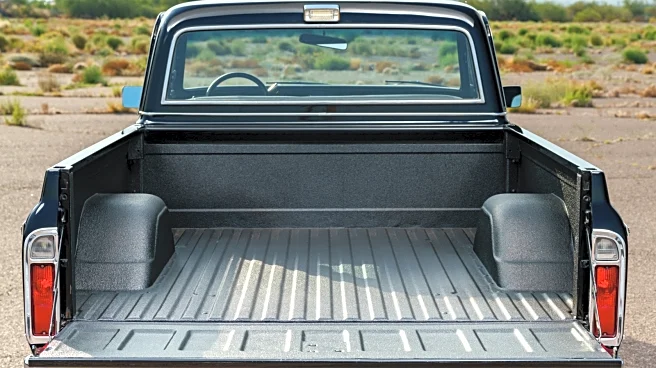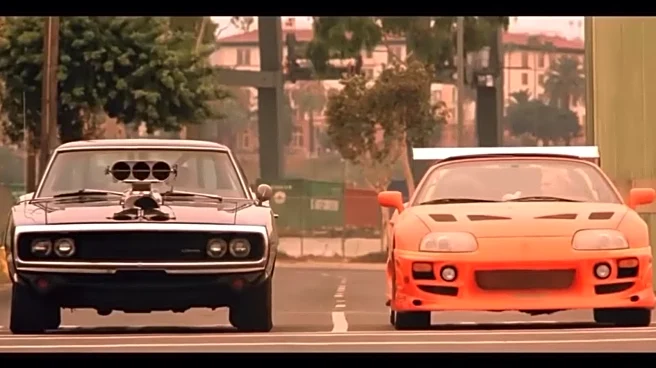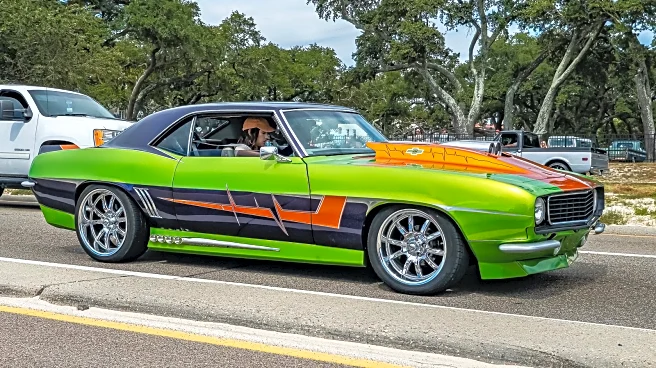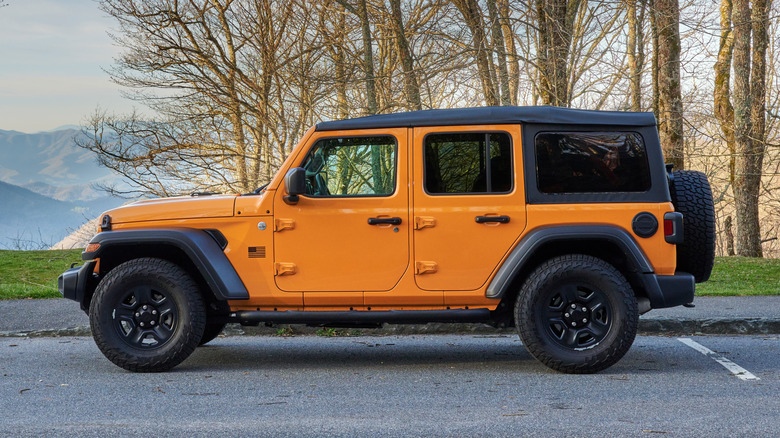
While the rest of the automotive market has been moving away from spare tires altogether, and others have traded in full-sized spares for compact "donut" tires, Jeep has held onto its full-sized exterior spare. It makes sense when you consider Jeep's consumer base, a sizable portion of which uses their Jeep for rock crawling or hitting the trail.
The Jeep brand got its start in the 1940s, with a contract to design vehicles for the United States military. Even today, the shared DNA with those nearly
century-old tactical vehicles appears obvious when looking at a Jeep Wrangler. While the Wrangler has changed through the years, some of its original design and accessories have stuck around. Most notably, the full-sized exterior spare tire has remained mostly the same.
A full-sized exterior spare has been a mainstay of the Jeep design since its inception, and it stayed there because it offers multiple benefits. An exterior spare is easier to access when you need to use it. Unlike other cars, which store the spare in the trunk, the Wrangler's whole storage space remains available. Just as importantly, the exterior spare looks cool and is part of the Wrangler's trademark aesthetic. Yet, we're seeing more and more Jeeps without a tire on the back. We can't claim to know why that is, but here are some of the possible reasons.
Read more: 5 Of The Worst Car Trends We've Ever Seen
Some Tires Are Incompatible With The Rear Mount
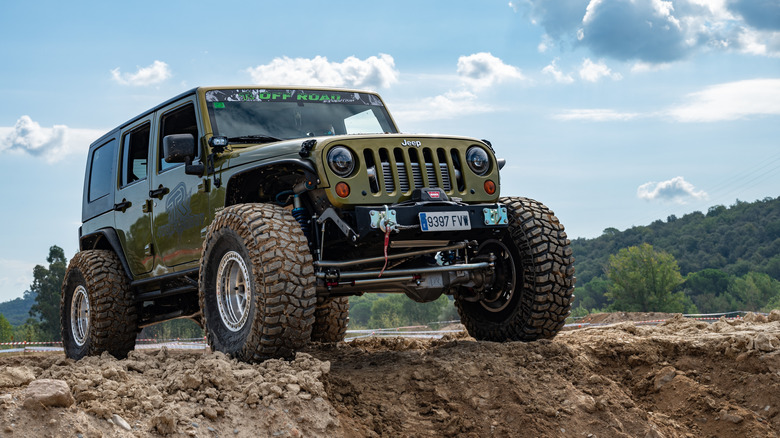
Wide customization possibilities is one of the biggest benefits of owning a Jeep, and is often done to improve off-road performances. If you're planning to climb boulders or hit the trails, tires might be one of the first things you upgrade. Aftermarket tires may improve your performance on dirt tracks and uneven terrain, but they can come with their own complications.
The rear tire tailgate mount is designed to accommodate stock tires. Moreover, the tailgate itself is designed to endure the weight of that specific tire. Larger options, like the (popular among Jeep drivers) 35-inch tires, might fit on the stock spare tire carrier, but they put extra stress on the hardware. If you're upgrading to larger tires, you're faced with a choice. You can reinforce your tailgate and upgrade the tire mount, or you can remove the spare tire. It appears that many drivers choose the latter. Additionally, because large tires are so expensive, it's not uncommon for Jeep owners to only upgrade the four main wheels and not the spare. In that case, it makes sense to take the spare off altogether.
A Rear Tire Isn't Always Necessary
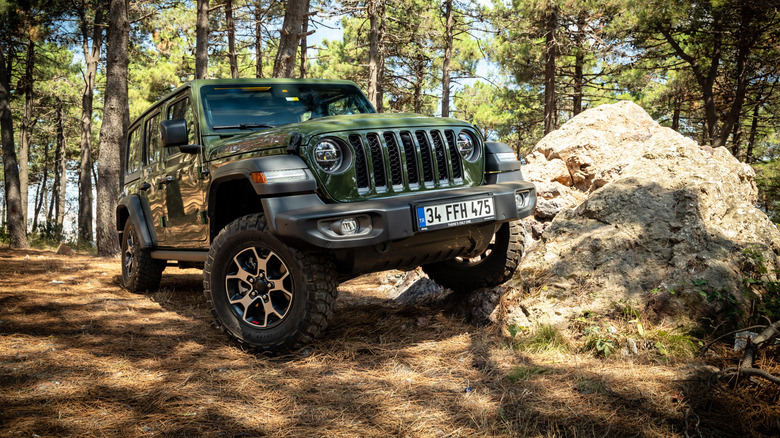
Whether out in the wilderness or in the urban jungle, some Jeep drivers don't want a spare mounted to the back. If you're driving off-road over uneven terrain, where your vehicle is likely to get a little roughed up, you might not want the extra 50 pounds hanging on the backside. Some drivers take the spare off the rear mount and tuck it in the back seat to reduce the risk of damage when driving on rough roads.
Alternatively, some drivers remove the spare tire when they're driving in the city and are less likely to experience an emergency. You can take the tire off and leave it in the garage during the week, which might even lead to a (very small) reduction in fuel consumption, and put it back on the weekend for your off-road excursions. One of the major benefits of the exterior spare tire is its ease of access, which only makes it easier to remove it when not needed.
Flat Tires Are Not Common Enough
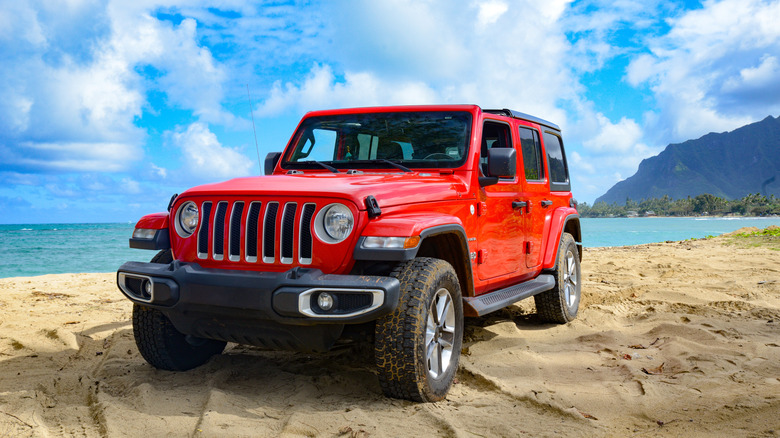
A car pulled off to the side of the road, the driver struggling to swap out the spare tire; It's a common movie trope, sure, but chances are that it happened to you, too, if only just once. The fact is that, despite the frequent appearances of flat tires in our nightmares, they don't actually happen all that often. On average, a driver will experience a flat tire just five times in their lifetime.
That's why many car brands (including Jeep, in some models) have ditched the spare tire altogether in favor of run-flat tires, tire sealant kits, or a built-in air compressor. Because flat tires happen so infrequently and thanks to the many services offered by AAA and the likes, many drivers feel that the benefit of a spare tire is not worth the space it takes up, its maintenance cost, and the added weight. By ditching the spare, you also save the cost of buying the tire itself, while making your vehicle marginally more fuel-efficient.
That said, most spare tire alternatives, like run-flat tires and sealants, are useful for small punctures but won't necessarily hold up to more serious damage. If you do get a flat when you're off the map, nothing beats a spare.
Removing The Spare Tire Improves Departure Angle
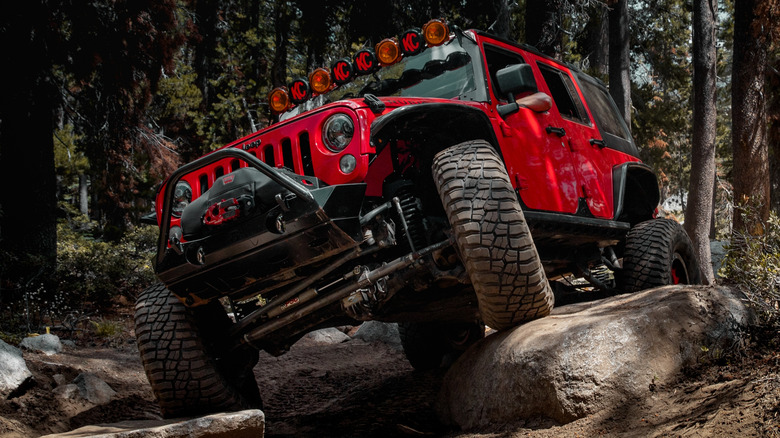
While it's true that Jeeps are made with uneven terrain in mind, they can still get caught on rocks and other obstacles, leaving you stranded or causing damage to the vehicle. In those cases, you definitely want your spare tire with you, in case you catch a jagged rock and get a flat. However, you don't necessarily want the tire to hang around in the back, since that exposes it to extra damage. Placing the tire inside the car also provides a little more clearance and improved rearview visibility during these intense driving situations.
There are three main things to pay attention to when driving your Jeep off the beaten path. The first is approach angle, which refers to the angle between the bottom of the front tire and the front of the vehicle. It determines whether an object will strike your bumper, headlights, or tire first. The second is breakover angle, which refers to the space between the front and rear tires and the height of the frame. Last is departure angle, which is similar to approach angle but refers to whether you can safely clear an object without damaging the back of your Jeep. The departure angle is what could be improved by removing the spare tire from the back.
The Back Of A Jeep Can Hold Other Accessories

Let's face it, not everyone who drives a Jeep is going to take it off-road. To some, the exterior spare tire is a useful tool and a crucial part of a Jeep's visual appeal, while others prefer ditching the tire for something else. Removing the exterior spare is what's known as a "spare tire delete." Once completed, you'll have a blank slate on the back of your Jeep, which you can use to hold other accessories.
The Jeep Wrangler does have some interior cargo space behind the rear seats, and you can expand the cargo area by folding the seats down. Still, some adventures require even more gear. Depending on how you're using your Jeep, you might use the exterior rear space to hold Jerrycans, hiking gear, first aid kits, and more. Without a bulky full-sized spare tire on the back of your Jeep, you'll also have an easier time mounting a bike rack or pulling a trailer.
Want the latest in tech and auto trends? Subscribe to our free newsletter for the latest headlines, expert guides, and how-to tips, one email at a time.
Read the original article on SlashGear.
